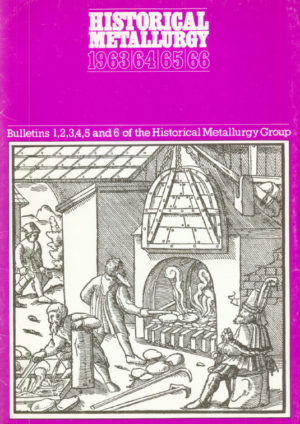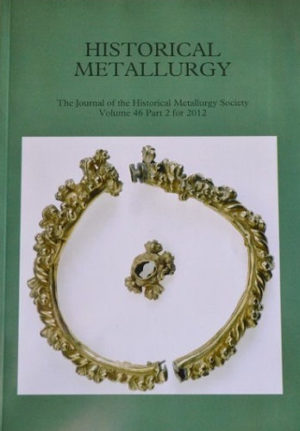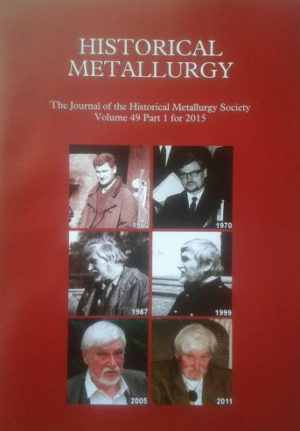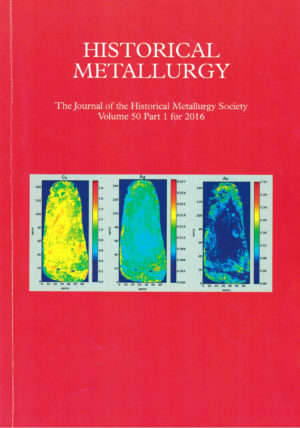Journal Contents
The beginnings of electro-metallurgy in Britain: a note on the career of Robert S. Hutton (1876-1970)
Geoffrey Tweedale
Pages 71-75
Before the beginning of the twentieth century, charcoal, fossil fuels and an air blast were the favoured methods for melting and refining iron and steel. Developments in electrical engineering towards the end of the nineteenth century, however, led metallurgists to realise that electric melting was likely to be technically and commercially more efficient than the crucible, open-hearth and Bessemer processes.
In the nineteenth century the Americans had made the running in electro-metallurgy. Robert Hare, a Philadelphia chemist, born in 1781, is credited with constructing the first electric furnace, which he used for converting charcoal into graphite. In 1886 Charles Hall had used electricity in making aluminium and, building on this work, two brothers, Alfred and Eugene Cowles, applied the technique to the production of aluminium bronze. In 1891 Edward G. Acheson used the electric furnace to produce a new grinding substance, carborundum. Edward Colby had also filed basic patents on the electric furnace in the 1890s.
The radiocarbon dating of iron artefacts using accelerator mass spectrometry
Richard G Cresswell
Pages 76-85
Rather than dating associated materials when the age of an iron artefact is required, a date may be obtained from the carbon that the iron has incorporated from the smelting process. Large sample sizes have forestalled this method in the past; radiocarbon dating using accelerator mass spectrometry has reduced the sample size requirements to less than 5 mg carbon equivalent. Thus, only 10 g of wrought iron is needed, while for high carbon (2%) steel or cast iron, only 250 mg may be required. Two historical irons, dated at the IsoTrace Laboratory, Toronto, illustrate the capabilities of this technique.
The gilding of armour
A R Williams
Page 86
Fine armour was decorated in the fifteenth century by apphed borders of gilded brass or bronze. From the closing years of the fifteenth and the beginning of the sixteenth centuries, the armour itself was gilded. Decorative patterns were etched on to the surface and part or all of these were then covered with gold. This gilding was not incompatible with the hardening of steel armour, and some of the finest specimens of princely armour show both features.
Issac Wilkinson at Backbarrow
David Cranstone
Pages 87-91
Isaac Wilkinson’s career as ‘potfounder’ at Backbarrow, Cumbria, from 1735 to 1748 is re-examined from primary documentary evidence. Considerable evidence survives on his relationship to the Backbarrow Company and on his ironfounding activities; the latter includes the introduction of blowing cylinders into Backbarrow Forge over the period 1737-9.
Observations on the structures and formation of microscopic smithing residues from Bixby Blacksmith Shop at Barre Four Corners, Massachussetts, 1824-55
Henry Unglik
Pages 92-98
Metallographic examination of spherical globules and plates of scale from a 19th century blacksmith shop at Barre Four Comers, Massachussets was undertaken in order to determine the structure of the smithing residues and its implications. Microhardness of various phases was measured and compared with the results obtained by other workers. The general mechanism of formation of smithing residues is discussed. The manner of formation of the globules and plates is addressed in particular. A similarity is noted between the kind of smithing residues formed in the course of forging iron in 19th century North America and in ancient Europe.
A metallographic investigation of eneolithic arsenical copper artefacts from Mondsee, Austria
P Budd
Pages 99-108
Thirteen copper-based artefacts excavated during the last century from what are now understood to be pre-Bronze Age contexts at the lake settlement of Mondsee, were examined as part of a wider investigation into the nature of alloying in the European Copper Age’. The artefacts, now held in the collection of the Institut fiir Ur- und Friihgeshichte at the University of Vienna, consisted of ten flat axes (or flat axe fragments), two daggers and a droplet of metal. Although the exact find spot was not recorded in detail the objects were said to have been recovered from “Mondsee, Station See”, a site discovered in 1872 and located at the junction of the Mondsee and Attersee. The excavation technique was poor by modem standards and no detailed information was given on the specific context of the metal finds. The Mondsee settlement is now interpreted as belonging to the Austrian Copper Age, or Eneolithic, and is dated to the mid 4th millennium cal BC.
The iron and copper slags at Baratti, Populonia, Italy
Peter Crew
Pages 109-
It has been calculated that the slags at Baratti represent a total iron production, between 600 and 100 BC, of up to half a miUion tonnes. The evidence on which this calculation is based is re-examined. A number of alternative interpretations are put forward, in particular that a significant proportion of the slags are from copper smelting.
![[Test] The Historical Metallurgy Society](https://test.historicalmetallurgy.org/wp-content/uploads/2020/02/Logo120.png)





There are no reviews yet.